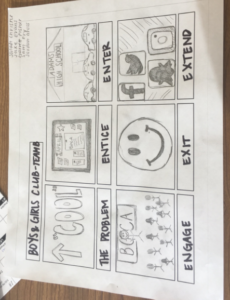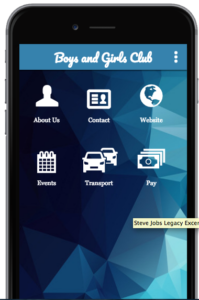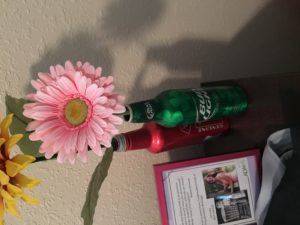
Prototype→Bring a friend day/ guest lecturer
Problem: We need to help BGCA increase the “Cool” factor. Once we do this, the transportation problem will fix itself.
Entice: We can advertise on social media and make fliers about the special guest lecturer who is coming to the club and each member can bring a friend for free. The BGCA members can also spread word to their friends about the event.
Enter: Once we have a headcount, we could do our best to get everyone there via Ms. Camille’s van and by having other volunteers drive.
Engage: The event will promote a fun atmosphere with food and drinks. We will make sure the guest is relevant and interesting to the teenagers. After the lecture, the guest can do some sort of interactive activity with the kids.
Exit: After the day is over, the club members and friends leave with a positive view of the club.
Extend: The members and their friends will share this experience by posting pictures on social media.

